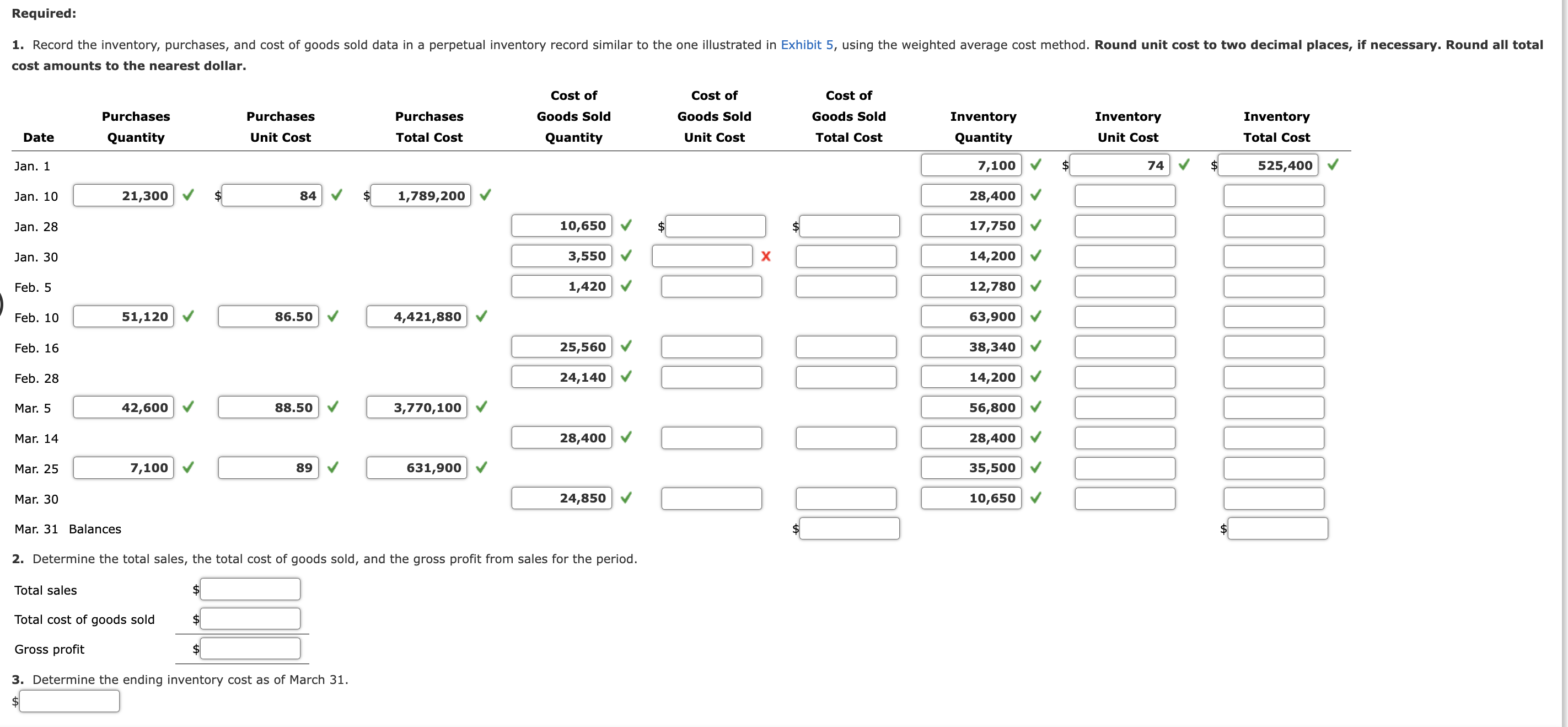Answered step by step
Verified Expert Solution
Question
1 Approved Answer
Required: 1. Record the inventory, purchases, and cost of goods sold data in a perpetual inventory record similar to the one illustrated in Exhibit

Required: 1. Record the inventory, purchases, and cost of goods sold data in a perpetual inventory record similar to the one illustrated in Exhibit 5, using the weighted average cost method. Round unit cost to two decimal places, if necessary. Round all total cost amounts to the nearest dollar. Cost of Purchases Purchases Purchases Goods Sold Cost of Goods Sold Date Quantity Unit Cost Total Cost Quantity Unit Cost Cost of Goods Sold Total Cost Inventory Quantity Inventory Unit Cost Inventory Total Cost Jan. 1 7,100 $ 74 525,400 Jan. 10 21,300 84 $ 1,789,200 28,400 Jan. 28 Jan. 30 Feb. 5 10,650 3,550 1,420 Feb. 10 51,120 86.50 4,421,880 Feb. 16 25,560 Feb. 28 24,140 Mar. 5 42,600 88.50 3,770,100 Mar. 14 28,400 Mar. 25 7,100 89 631,900 Mar. 30 24,850 QII II I I 17,750 14,200 12,780 63,900 38,340 14,200 56,800 28,400 35,500 10,650 $ Mar. 31 Balances 2. Determine the total sales, the total cost of goods sold, and the gross profit from sales for the period. Total sales Total cost of goods sold $ $ Gross profit 3. Determine the ending inventory cost as of March 31. $
Step by Step Solution
There are 3 Steps involved in it
Step: 1

Get Instant Access to Expert-Tailored Solutions
See step-by-step solutions with expert insights and AI powered tools for academic success
Step: 2

Step: 3

Ace Your Homework with AI
Get the answers you need in no time with our AI-driven, step-by-step assistance
Get Started


